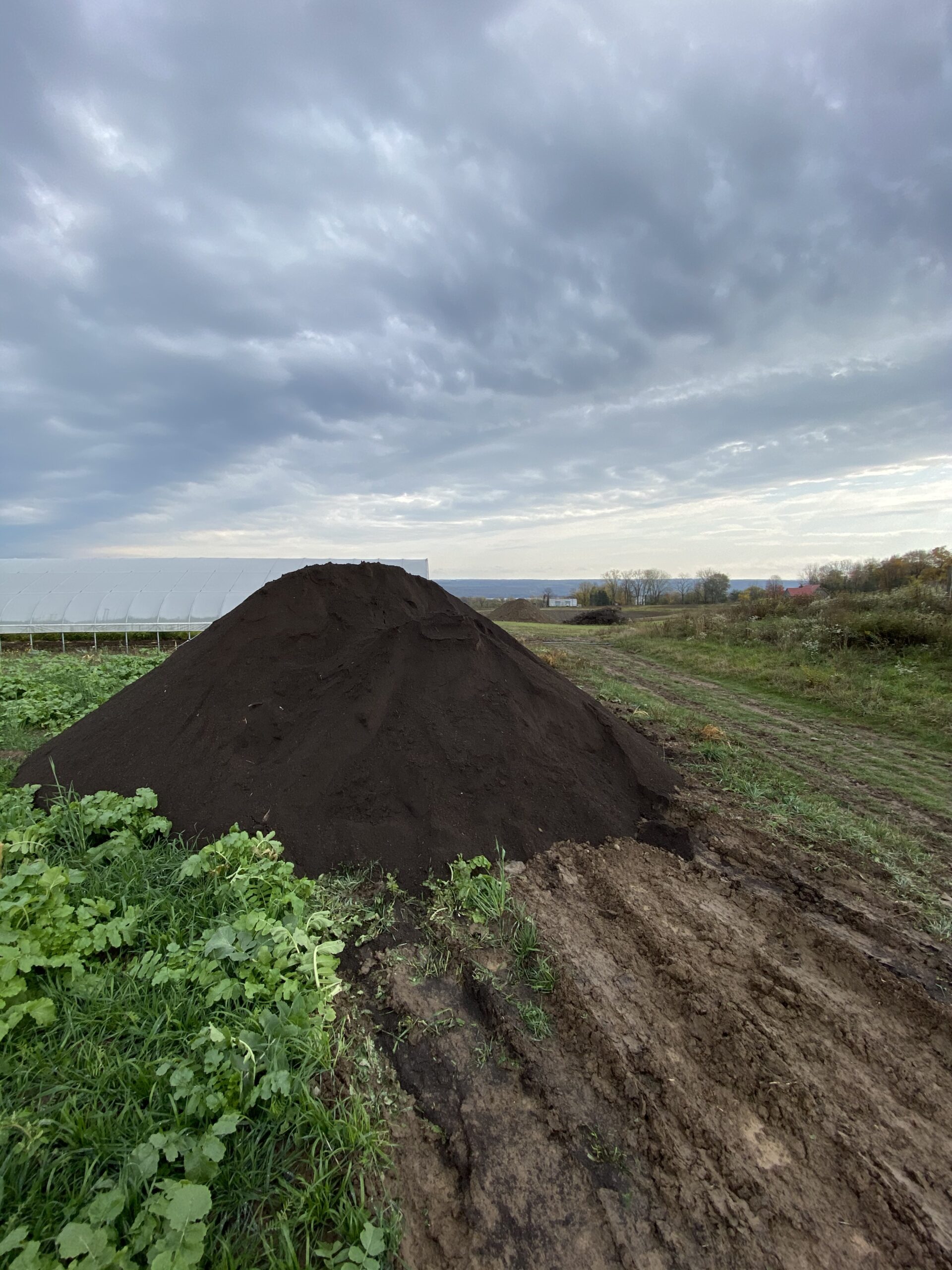
09 Apr Blog Post #2 – humus
What is humus? and why is it important?
Humus is the essential building block to healthy soil. It refers to the area of the soil structure that is “living”. This area consists of soil organic matter, created from broken down biological carbon and the micro-organisms that are inhabiting that space. This is a very important part of the structure because it is where the soil-mineral cycle and the water cycle take place. These two cycles are paramount to healthy soil.
Now this all sounds great, but why does it matter?
Well for the past few generations, we have lived by the “conventional” methods of land fertilization. These methods focus around soil as only a vehicle to plant seeds in, and the true nutrients come from the added nitrogen – phosphorus – and potassium (NPK). These big three nutrients have dominated the conversation for many years now. These conventional methods do not put a value on the “living” elements of the soil. They stipulate the need to feed the plants and not the soil. The soil becomes a forgotten element and rather gets referred to as “dirt”
Now these two contrasting ideas between soil and dirt represent the change in understanding about how plants grow and what the value of living ecosystems are.
First – a living ecosystem does not need outside fertilization. The living ecosystem is able to internally provide the wide range of micro and macronutrients through nutrient exchange and cycling. This provides a wider range of nutrients then traditional NPK-specific amendments.
Second – a living ecosystem has a “home team” of micro-organisms that can ward off diseases and invasive pests/insects
Third – a living ecosystem that provides a healthy soil-mineral exchange with healthy plants that will in themselves provide valuable ecosystem services. For example: healthy plants with healthy root structures can reduce erosion, increase water retention, sequester carbon, and have more complete nutrient content.
Needless to say, humus is very important.
The timing could not be more vital. At the same point, we are running out of conventional nutrients, and seeing the effects of unhealthy soil on our ecosystem (compromised water quality, reduced soil fertility, spread of diseases, erosion).
So, how do we increase humus content? In my last blog post, I mentioned that we can divert organic waste from our landfills to increase soil carbon content. Soil carbon is a key building block of humus and essentially the fuel of the humus creation.
Humus is one of the essential building blocks to a healthy world, but we need more people to learn about it. If more people understand the value of soil health, we can support policies to increase soil health practices/education, buy from producers who practice soil health, and understand the importance of a healthy ecosystem.



No Comments